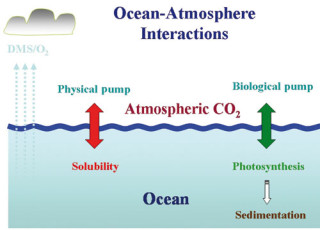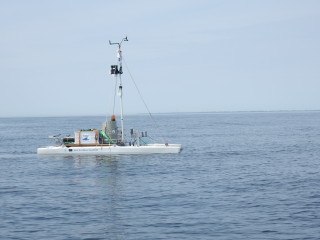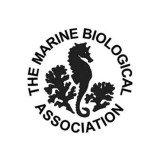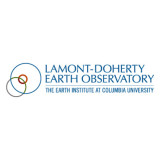Everything in nature serves a purpose, even if we do not understand it or fail to identify it. Some natural processes are so subtle it can be easy to think that they simply do not exist. Look at the sky and then at the ocean: one over the other, so distinguishable, and never seeming to touch. But they do. There is a thin layer of ocean surface in contact with the air, and in it, many chemical and biological processes take place. But our understanding of the sea’s surface microlayer is still very limited.

The surface microlayer is a boundary that serves as a mediator of air-sea gas exchange. The microlayer is mainly formed by chemicals (carbohydrates, proteins, and fatty acids) released by microorganisms, either in the underlying bulk water or directly in the microlayer. It is as thin as one millimeter, but still it controls all exchange between the atmosphere and the ocean. It is the link between interfacial processes at the sea surface and marine biogeochemical cycles, air-sea interactions and climate. So for something so subtle and thin, the surface microlayer sure serves a big purpose.
Its composition is also unique. The diversity of microorganisms in the surface microlayer can be significantly different from that in the underlying water, even a few centimeters below it. The living organisms and suspended organic compounds inside the layer have an impact on chemical, physical biological and climatological processes. For instance, certain bacteria can affect the gas exchange between ocean and air. It is this overlooked but very determinant piece of our ocean’s puzzle that research vessel Falkor embarked to study, in the Indian and Pacific oceans.
Holistic approach
Little is known about the surface microlayer, so focusing on just one science field would prove inadequate in order to begin deciphering how it works. This is why the first cruise on Falkor dedicated to the surface microlayer, took a holistic approach linking multidisciplinary approaches including, atmospheric deposition, aerosol chemistry, gas and heat exchange, sea surfaces as microbiological habitat, and new technologies for in situ sensing.
State-of-the-art technology was deployed in a series of experiments in order to characterize sea surfaces. Experts identified the exchange of elements and organic compounds between the atmosphere and the sea surface, creating a set of new parameters to characterize air-sea exchange of climate-relevant gases and heat, and study the sea surface as a habitat for complex microbial communities.
Thinking of every angle – Four working groups
 In order to take advantage of the combined expertise and knowledge onboard, a series of working packages were designed. In each of them, every scientific field was able to shine while making sure that all of the other teams benefited from the data and findings. There was a total of four working packages.
In order to take advantage of the combined expertise and knowledge onboard, a series of working packages were designed. In each of them, every scientific field was able to shine while making sure that all of the other teams benefited from the data and findings. There was a total of four working packages.
- Biological aspects
The first one focused on biological aspects of the surface microlayer. The scientists in this group quantified and characterized the abundance and diversity of different organisms on the surface microlayer, compared different communities of organisms between them, and linked changes in microbial abundance and diversity. Organic compounds create a sort of film that greatly impacts the exchange between sea and air, this group provided new insights into the workings of such film through the study of the surface microlayer’s biology.
- Climate change – Carbon
The second working package was more concerned with carbon, and therefore was relevant for climate change considerations. The processes controlling carbon transport and transformation in the ocean remain uncertain, in order to assess them, studies require accurate estimates of the air-water carbon dioxide flux. The scientists on Falkor measured these processes and sought to resolve the relative importance of wind, waves, buoyancy, stratification, and surface material play, in order to ultimately determine the role of the surface microlayer on the air-water carbon dioxide flux versus other carbon budget terms in oceans.
- Climate change – Trace elements
The experiments of the third working group also yielded relevant information regarding oceans and climate change. There are many elements in our oceans that are not related to the water’s salinity, we refer to them as trace elements. Trace elements and their isotopes act as nutrients and tracers of oceanic cycling processes both today and in the past. The experts participating on this working package quantified the elements and their mechanisms, an essential part of understanding ocean ecosystems and the global carbon cycle (and thus climate change).
- Organic components
Finally, the fourth working group was concerned with the organic components of the surface microlayer. These compounds behave like a film, and so the microlayer affects gas exchange by reducing gas transfer velocity through diffusion, but also affects the carbon dioxide difference between air and sea through biogeochemical processes. The scientists working in this group measured gas exchange rates and acquired high resolution scans of biochemical properties of the microlayer to investigate links between its properties, gas transfer velocities, and aerosol chemistry.
Concentrated power
The thin microlayer no more than one millimeter, is strong enough that all exchange between air and sea depend on it, yet fragile enough that its composition depends on climate conditions, precipitation, and wind speed. It could be easy to overlook it. But it’s fascinating being able to understand how such a subtle presence can have a global impact that we are just beginning to grasp. Learn how the cruise and the team deployed top of the line technology to explore the concentrated power of the ocean’s surface microlayer.
Data & Publications
The resulting shipboard dataset is being archived at the Rolling Deck to Repository and is now available.
Data quantifying the extracellular carbonic anhydrase in the sea-surface microlayer has been archived in PANGAEA.
Multiparameter measurements of biochemical properties of the sea-surface microlayer have been archived in PANGAEA.
Net community production and respiration of oxygen in the sea-surface microlayer data have been archived in PANGAEA.
pCO2 and turbulence data from an autonomous drifting buoy have been archived in PANGAEA.
- Wurl, O., Ribas Ribas, M., Landing, W., and Zappa, C. (2017). Surface Skin Salinity - First in situ Measurements in the Tropical Ocean. Oral Presentation at the Global Ocean Salinity Workshop, Woods Hole, MA, USA.
- Wurl, O., Ekau, W., Landing, W., and Zappa, C. (2017). Sea Surface Microlayer in a Changing Ocean - A perspective. Elem Sci Anth. 2017; 5:31. DOI: http://doi.org/10.1525/elementa.228. [This article is published as OPEN ACCESS].
- Oeljeschläger, L. (2017). Chemical Composition of Dissolved Organic Matter (DOM) of the Sea Surface Microlayer in the Indo-Pacific Ocean. Masters of Science Thesis at the University of Oldenburg.
- Rahlff, J., Stolle, C., & Wurl, O. (2017). SISI: A New Device for In Situ Incubations at the Ocean Surface. Journal of Marine Science and Engineering, 5(4), 46; doi:10.3390/jmse5040046. [This article has been published as OPEN ACCESS.]
- Rahlff, J. (2017). The Role of Microbial Communities at the Sea Surface in Air-sea Gas Exchange. Doctorate Thesis at the University of Oldenburg.
- Shelley, R., Wyatt, N., and W. Landing. (2017). Trace Elements in Aerosols, Rain, and the Sea-Surface Microlayer of the South Pacific Ocean Under Low Wind Conditions. Oral Presentation at 2017 Goldschmidt Conference, Paris, FRANCE.
- Shelley, R., and W. Landing. (2017). Trace Elements in Aerosols, Rain, and the Sea-surface Microlayer of the South Pacific Ocean Under Low Wind Conditions. Oral Presentation at Gordon Research Conference in Chemical Oceanography, New London, NH, USA.
- Wurl, O., Bird, K., Cunliffe, M., Landing, W., Mustaffa, N., Ribas Ribas, M., and C. Zappa. (2017). Warming and Freshening of the Sea Surface by Trichodesmium sp. Oral Presentation at International Workshop: Harmful Algal Blooms: Unifying Insights from Lab Experiments, Field Monitoring and Modeling, Delmenhorst, GERMANY.
- Wurl, O., Ribas Ribas, M., Landing, W., and C. Zappa. (2017). Surface Skin Salinity - First in situ Measurements in the Tropical Ocean. Oral Presentation at Global Ocean Salinity Workshop, Woods Hole, MA, USA.
- Wurl, O., Bird, K., Cunliffe, M., Landing, W., Miller, U., Mustaffa, N., Ribas-RIbas, M., Witte, C., and C. Zappa. (2018). Warming and inhibition of salinization at the ocean's surface by cyanobacteria. Geophysical Research Letters, 45, doi: 10.1029/2018GL077946.
- Rahlff, J., Ribas-Ribas, M., Brown, S., Mustaffa, N., Renz, J., Peck, M., Bird, K., Cunliffe, M., Melkonian, K., and Zappa, C. (2018). Blue pigmentation of neustonic copepods benefits exploitation of a prey-rich niche at the air-sea boundary. Scientific Reports, 8, 11510. doi: 10.1038/s41598-018-29869-7.
- Ribas-Ribas, M., Battaglia, G., Humphreys, M. and O. Wurl. (2019). Impact of Nonzero Intercept Gas Transfer Velocity Parameterizations on Global and Regional Ocean - Atmosphere CO2 Fluxes. Geosciences 2019, 9, 230, doi: 10.3390/geosciences9050230.
- Wurl, O., Landing, W., Mustaffa, N. I. H., Ribas-Ribas, M., Witte, C., and C. Zappa. (2019). The ocean's skin layer in the tropics. Journal of Geophysical Research: Oceans, 124, doi: 10.1029/2018/JCO14021.
- Wurl, O., et. al. (2019). Cyanobacteria Surface Blooms: Inhibition of Evaporation Mimics Regions of Participation. Oral Presentation at European Space Agency Living Planet Symposium, Milano Italy.
- Ribas Ribas, M., et. al. (2019). The Importance of the Non-zero Intercept on the Gas Transfer Velocity Parameterization on Global Ocean-atmosphere CO2 fluxes. Oral Presentation at European Space Agency Living Planet Symposium, Milano, Italy.
- Mustaffa, N., Ribas-Ribas, M., Banko-Kubis, H., and O. Wurl. (2020). Global reduction of in situ CO2 Transfer Velocity by Natural Surfactants in the Sea-surface Microlayer. Proceedings of the Royal Society A, Vol. 476, Issue 2234, doi: 10.1098/rspa.2019.0763. [This article has been published OPEN ACCESS].
- Rahlff, J., Khodami, S., Voskuhl, L, Humphreys, M., Stolle, C., Martinez Arbizu, P, et. al. (2020). Short-term Responses to Ocean Acidification: Effects on Relative Abundance of Eukaryotic Plankton from the Tropical Timor Sea. bioRxiv, doi: 10.1101/2020.04.30.068601.
- Mustaffa, N. (2018). Biogeochemical properties of the sea-surface microlayer and its effect on air-sea CO2 exchange. Doctorage Thesis, University of Oldenburg.
- Mustaffa, N., Striebel, M., and O. Wurl. (2017). Enrichment of extracellular carbonic anhydrase in the sea surface microlayer and its effect on air-sea CO2 exchange. Geophyiscal Research Letters, 44 (22), doi: 10.1002/2017GL075797. [ This article has been published as OPEN ACCESS].
- Wurl, O., Mustaffa, N., and Striebel, M. (2018). Enrichment of extracellular carbonic anhydrase in the sea surface microlayer and its effect on air-sea CO2 Exchange, Oral Presentation at Ocean Sciences Meeting, Portland, OR, USA.
- Laxague, N., and Zappa, C. (2020). The Impact of Rain on Ocean Surface Waves and Currents. Geophysical Research Letters, 47 (7), doi: 10.1029/2020FL087287.
- Zappa, C., Brown, S., Laxague, N., Dhakal, T., Harris, R., Farber, A., and Subramaniam, A. (2020). Using Ship-deployed High-endurance Unmanned Aerial Vehicles for the Study of Ocean Surface and Atmospheric Boundary Layer Processes. Frontiers in Mar. Sci. Vol. 6, doi: 10.3389/fmars.2019.00777.
- Rahlff, J., Khodami, S., Voskuhl, L., Humphreys, M., Stolle, C., Martinez Arbizu, P., et. al. (2021). Short-term responses to ocean acidification: effects on relative abundance of eurkaryotic plankton from the tropical Timor Sea. Marine Ecology Progress Series, 658:59-74, doi: 10.3354/meps13561.
- Rahlff, J., Stolle, C., Giebel, H., Mustaffa, N., Wurl, O., and Herlemann, D. (2021). Sea Foams are Ephemeral Hotspots for Distinctive Bacterial Communities Contrasting Sea-surface Microlayer and Underlying Surface Water. FEMS Microbiology Ecology, 97, 4, doi: 10.1093/fiab035. [This article is published as OPEN ACCESS].
In the News
Scientific vessel stops by Guam on breakthrough mission
KUAM • November 17th, 2016
The Sea Has a ‘Skin’ We Can Use to Fight Climate Change
Inverse • November 15th, 2016
Tiny creatures, big insights: Ocean scientists make new discoveries in waters off Guam
Guam Daily Post • November 12th, 2016
Geheimnisse der Meeresoberfläche gelüftet (Secrets of the sea surface)
NWZ Online • November 11th, 2016
New discoveries are made about ocean’s ‘skin’
Saipan Tribune • November 10th, 2016
Researchers use drones to find worrying news in ocean
MemeBurn Online • November 10th, 2016
First Take Off of Unmanned Aircraft Scheduled From RV Falkor
Hydro International • October 10th, 2016
Unmanned Aircraft to Take Off From Falkor
Marine Link • October 10th, 2016
Oldenburg to Explore the Sea
NWZ Online • October 10th, 2016
Catamaran, UAV and Kayak Take on Study of Ocean’s ‘Skin’
Unmanned Aerial Online • October 9th, 2016
Scientists Turn to Drones For Closer Look at Sea Ice
Climate Central • April 23rd, 2015



